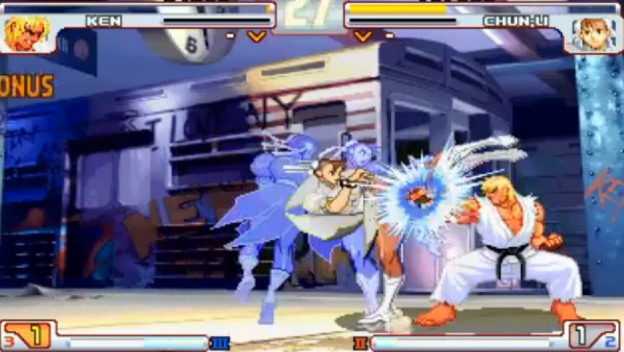
On the flip side, I can't blame Daigo too much for what he did, as it was technically optimal.
#Evo moment 37 how to
Once again, like I already said, the ability to learn how to parry Chun-Li's super all 10 times means that, at higher levels of play, Chun-Li might as well not use her super against someone who's trained enough to parry the whole thing. If Chun-Li's super had kicks come out at random, that would be a different story, but that could end up being even worse as it would add randomness to competitive play, and I'm not sure how I or others would feel about that. Since the kicks don't come out at random, even if you aren't able to consistently parry the move, you can at least know when to parry.Īt this point, you are able to practice consistently parrying Chun-Li's super. This is enough to inform to the Ken player that Chun-Li is about to use her super, at which point the Ken player can start trying to parry.

In this case, the screen fades a bit, and Chun-Li strikes a pose. Supers in most fighting games, including Chun-Li's usually have some kind of indication that they're about to happen. It's more impressive if you can parry a move that seemed unpredictable, whereas parries are a natural punish against moves with too much startup, or if your opponent is too predictable. Generally the reason parrying takes effort is because it tests your reaction skills. How Moment 37 should have gone is, Capcom should have made parrying Chun-Li's super impossible, and the Ken player should have lost. Why even bother using your super if there's a chance that your opponent can just say no to it? Even if parrying only half the super was possible, that still means that Chun-Li can say goodbye to half the damage she earned. But, if it's even possible to do what the Ken player did during moment 37, doesn't that kind of ruin the point of a super? Sure, it takes a lot of practice to do that many parries in a row, but the fact that it's possible means, if you get good enough, you can make it so any Chun-Li players facing you might as well just not have a super. Supers specifically want to reward you for building up a meter. Games want to reward you for doing the right thing. So, how does this apply to Moment 37? Well, as I just explained, a huge part of pretty much all competitive gaming, whether a turn based RPG, a fighting game, or a team based shooter, is strategy. Usually, you're supposed to strategically maneuver around your opponents to get to them, but in the case of aimbots, no matter what you do, you'll just end up getting headshot. This is a problem, since it removes part of the strategy of TF2. Recently, TF2 has become infested with bots who go with the sniper, and they disrupt the game by only ever headshotting you. So, why is the ability to parry a super move bad? To that, let's use a different game as an example- Team Fortress 2.

This is supposed to be a mechanic that rewards you with big damage for a well placed hit. A super is supposed to be a move you work for, and then use at the right time to unleash a powerful hit since you can only use it once when your meter is full. Put simply, I've always viewed Moment 37 as an example of bad game design because it pretty much goes against what a super is supposed to do.
The Chun-Li player then used a "super" (a really powerful move) on the Ken player, before the Ken player successfully parried all 10 hits of the attack and then wins the match, creating what is one of the most iconic moments at EVO.

One player was playing as Chun-Li and the other as Ken, and the Ken player had only a single pixel of health left. Official Evo Moment #37, Daigo vs Justin Evo 2004 in HD - YouTube Just to fill everyone in, for those of you who don't know what Moment 37 is (or have seen Moment 37 but just don't know what it's called), Moment 37 is a highly iconic moment from EVO, where two people were playing Street Fighter 3.


 0 kommentar(er)
0 kommentar(er)
